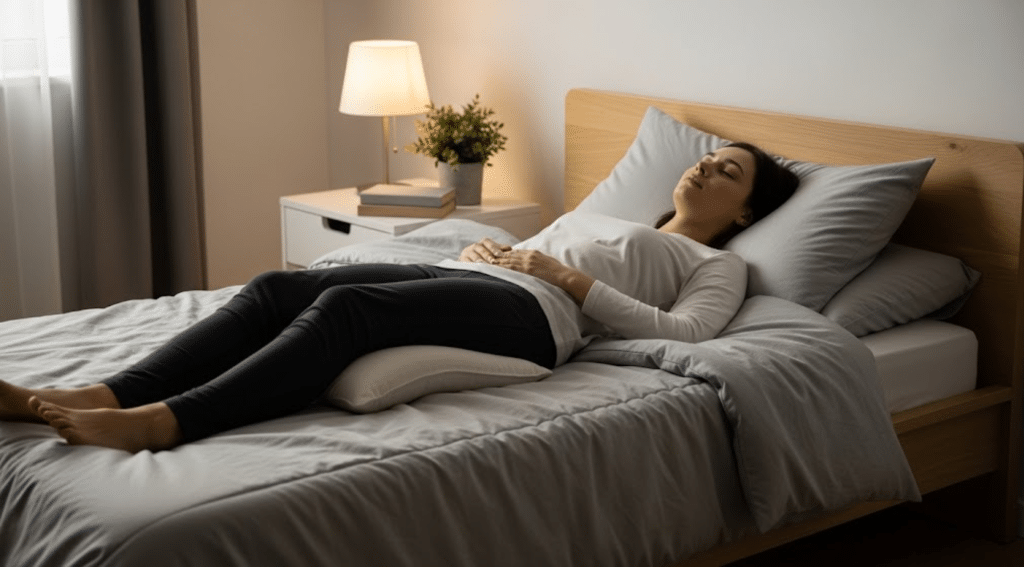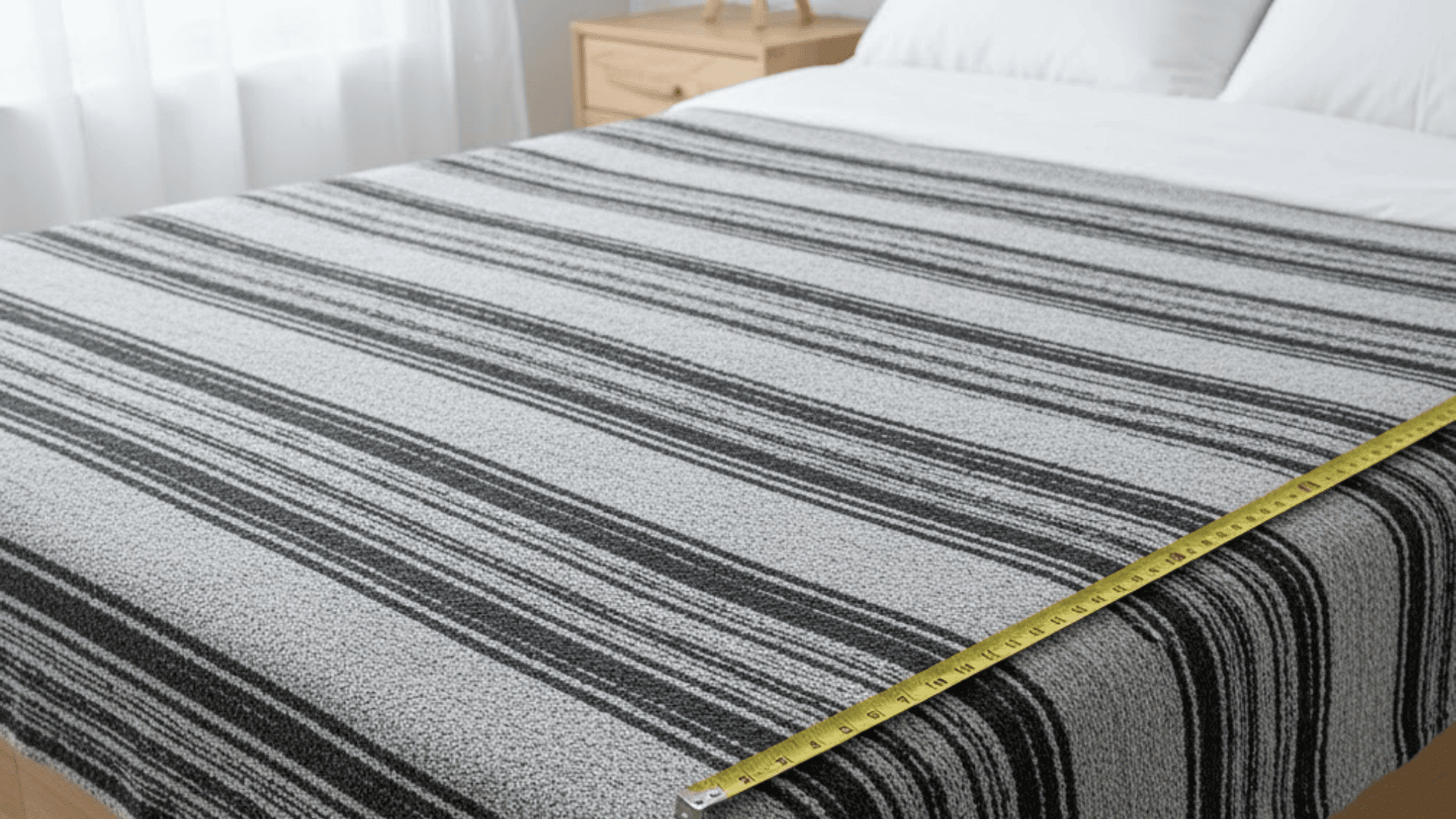If you’ve ever tossed and turned at night because of sciatica, I know exactly how exhausting it can be.
That sharp, shooting pain makes it tough to find a position that feels right and even harder to stay asleep once you do. I’ve been through nights like that, and it’s frustrating when nothing seems to help.
Over time, I’ve learned how to sleep with sciatica pain in a way that supports my back, eases pressure on the nerve, and helps me wake up feeling better.
I’m going to share the sleeping positions that work best, the pre-bed habits that make a difference, and how to pick pillows and mattresses that truly help. Let’s finally get you some rest.
Why Sciatica Pain Feels Worse at Night
Sciatica is pain that starts in the lower back and travels down one leg because a nerve is being squeezed.
This pain often feels worse at night because your body isn’t moving, which slows blood flow and makes the nerve more sensitive.
Lying flat or twisting your back while you sleep can also put more pressure on the nerve. Left- or right-sided sciatica just means the pain runs down one leg instead of the other, depending on which side of the nerve is pressed.
Sleeping on a soft or hard bed the wrong way, or staying in one position for too long, can make it worse. Sleeping on your side with a pillow between your knees can help keep your back straight and ease the pressure.
How to Sleep with Sciatica Pain
Sleeping with sciatica pain is about more than finding the right position. It’s about setting up your body and environment so you can rest without making the pain worse. The goal is to ease pressure on the nerve, keep your back supported, and help your muscles stay relaxed through the night.
- Use a supportive mattress and pillow that keep your spine in a natural position.
- Avoid sleeping in ways that twist your back or hips for long periods.
- Keep your sleep space comfortable, quiet, dark, and at a good temperature.
When your body feels supported and your surroundings are restful, it’s easier to get quality sleep and wake up with less discomfort from sciatica.
Best Sleeping Positions for Sciatica Pain Relief
If you have sciatica, the way you sleep matters a lot. Some sleep positions can make the pain worse, while others can help your back and legs feel better. The goal is to keep your spine straight and take pressure off the nerve.
Try these sleeping positions to help ease your pain and sleep more comfortably:
1. Side Sleeping With a Pillow Between Your Knees
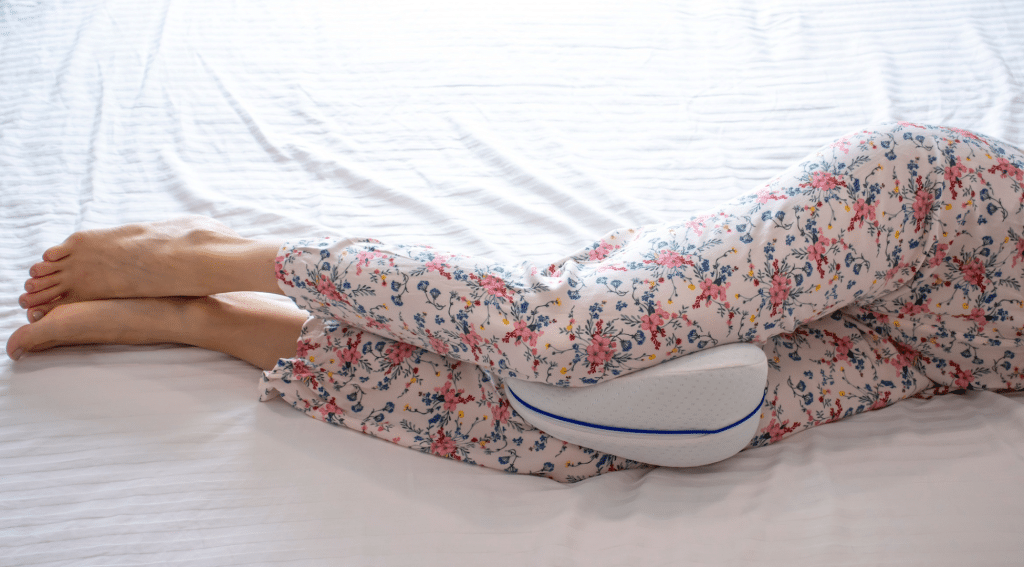
Sleeping on your side with a pillow between your knees helps your hips stay even and keeps your lower back from twisting. It also lowers pressure on the sciatic nerve.
The pillow keeps your top leg from falling forward, which protects your spine. This position is one of the best for easing sciatica pain at night.
2. Fetal Position on Your Pain-Free Side
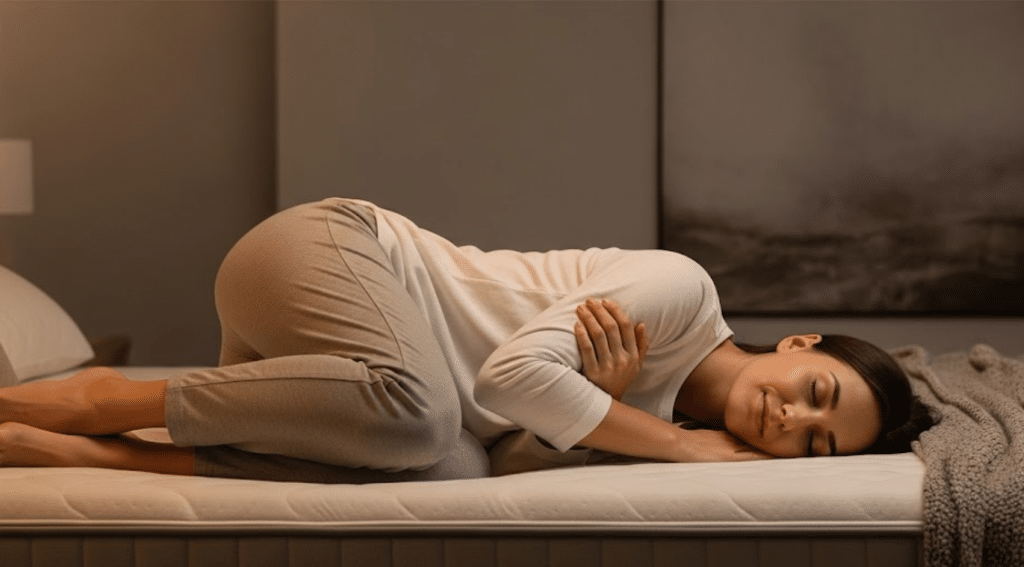
Curling up in a fetal pose on the side that doesn’t hurt can give your spine more space. This may ease pressure on the discs and nerves in your lower back.
Keep your knees bent and close to your chest. This position may help reduce sharp pain and make it easier to fall asleep.
3. Back Sleeping With Knees Elevated
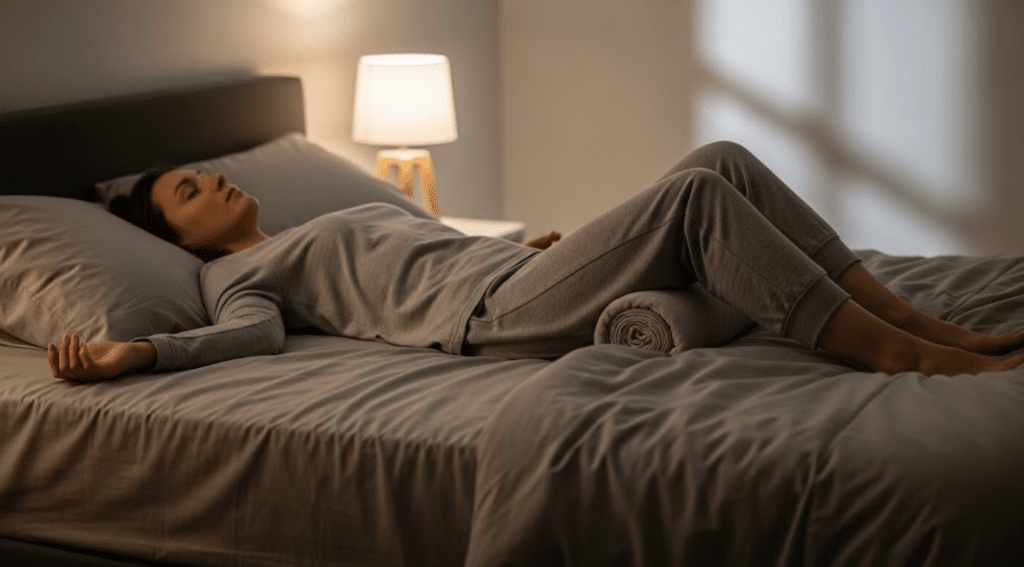
Lying flat on your back with a pillow or rolled towel under your knees helps your spine rest in a natural curve. This position takes weight off the lower back and reduces pulling on the sciatic nerve.
It spreads your body weight evenly and can make a big difference in how your back feels overnight.
4. Reclined Sleeping in a Zero-Gravity Position
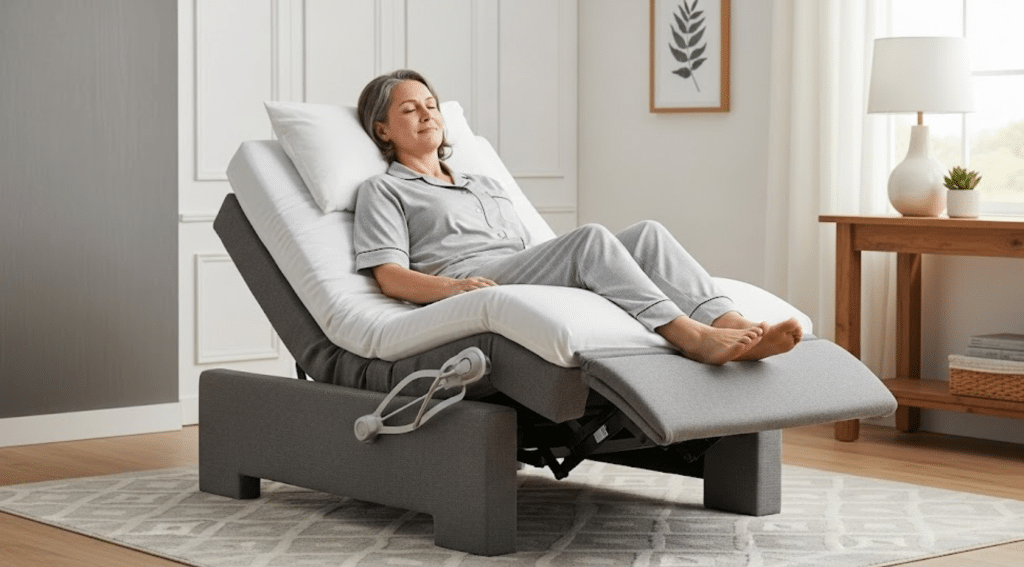
If you have a recliner or adjustable bed, try sleeping in a half-sitting position with your knees and head raised. This “zero-gravity” setup spreads out pressure and takes stress off your spine.
It’s useful for people with both sciatica and back pain, giving comfort and support during sleep, especially on tough pain days.
5. Stomach Sleeping With a Pillow Under Your Pelvis
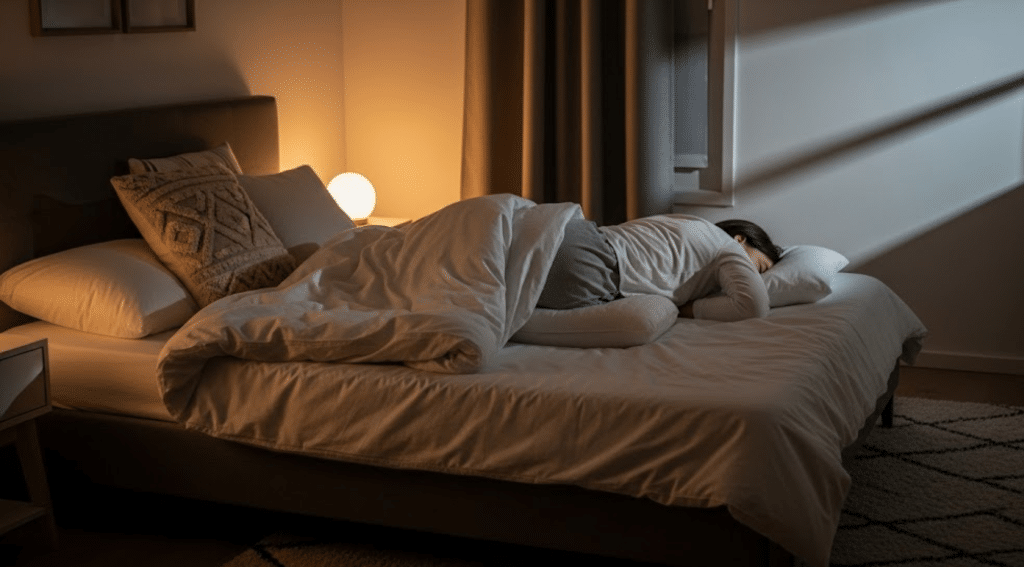
While sleeping on your stomach isn’t usually best for sciatica, some people find relief if they place a small pillow under their hips or pelvis.
This keeps the lower back from sinking too much and reduces pressure on the nerve. It’s not ideal for everyone, but it may help if other positions don’t work.
6. Sleeping With a Body Pillow for Full Support
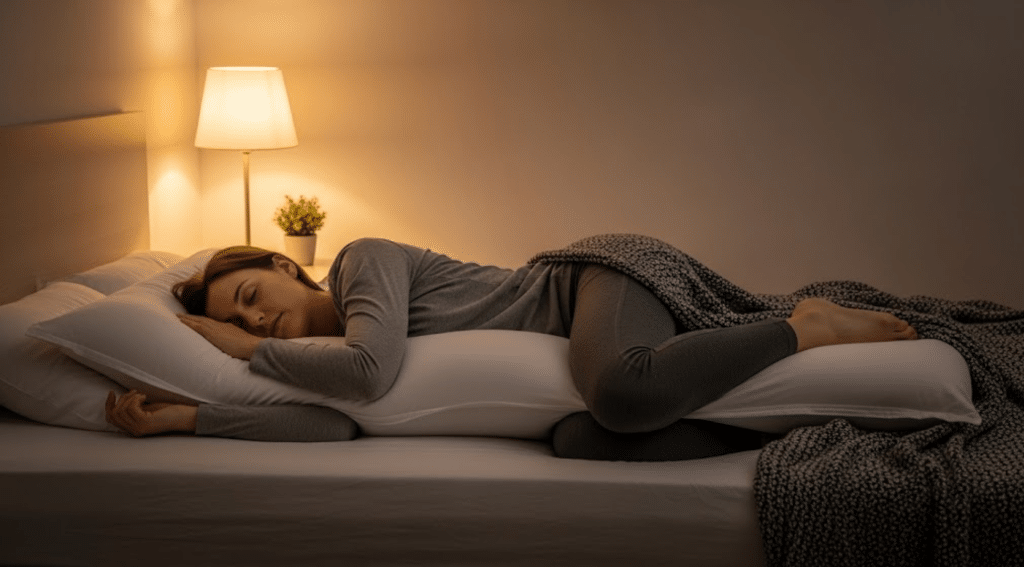
Using a long body pillow can help keep your whole body in place during the night. It supports your arms, legs, and hips while you sleep on your side.
This makes it easier to avoid twisting or rolling into a painful position. It also helps you stay comfortable and still through the night.
7. Floor Sleeping on a Yoga Mat or Futon
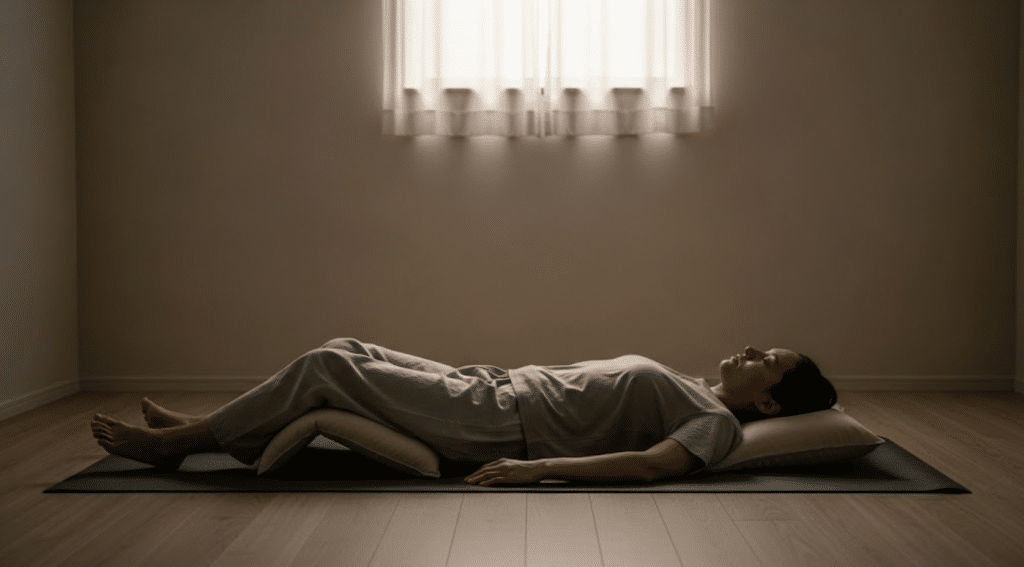
A firm surface like a yoga mat or futon may help some people with sciatica. It keeps your back from sinking too far, which can keep your spine straight.
Try sleeping on your back with a pillow under your knees or on your side with support between your legs. It may take time to adjust.
8. Using a Leg Wedge Pillow
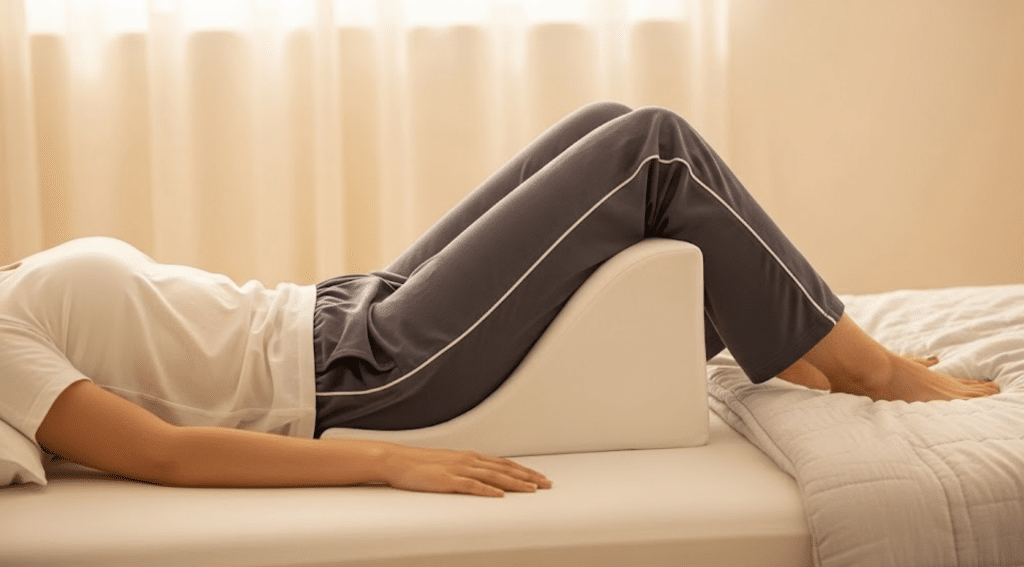
A leg wedge pillow lifts both legs while you lie on your back. This reduces pressure on your lower back and relaxes the spine. The raised legs help with blood flow and lower nerve tension.
It also helps your body stay in one position overnight, which may reduce tossing, turning, and nerve irritation.
Not every position works for everyone. Try out a few of these and see which one helps you sleep better. Keep your spine straight, use the right pillows, and give your body time to adjust. Sleeping better can help your pain feel more under control.
Pre-Bed Relief Strategies That Work
Getting a good night’s sleep with sciatica starts before you even get into bed. A few simple habits can relax your muscles, ease nerve pressure, and make it easier to rest.
- Gentle stretching: Try moves like knees-to-chest, pelvic tilts, or the figure-4 stretch to loosen tight muscles and reduce pressure in your lower back.
- Warm therapy: Take a warm bath or use a heating pad on your lower back to relax muscles and calm inflammation around the nerve.
- Calming environment: Keep your room cool, dim the lights, and use soothing scents like lavender to signal to your body that it’s time to rest.
By making these small adjustments before bed, you can set yourself up for deeper, more comfortable sleep with less pain.
Choosing the Best Pillows and Mattress for Sciatica Relief
The pillow and mattress you choose can shape how well you rest and how much relief you feel from sciatica. The right setup supports your body, keeps your spine in line, and eases pressure on sensitive areas.
Here’s how to choose the ones that work best for you:
Choosing the Right Pillow (Knee, Neck, and Body)
Using the right pillow helps keep your spine straight and lowers nerve pressure. A knee pillow works great if you sleep on your side; it stops your top leg from pulling your spine out of line.
A neck pillow keeps your head in the right spot, helping your whole spine stay balanced. A body pillow gives full support and helps you stay in one position through the night, which is helpful if you move a lot in your sleep.
Mattress Considerations for Sciatica
When picking a mattress, both material and firmness matter. Memory foam mattresses mold to your shape and ease pressure points, but some people find them too soft. Hybrid mattresses mix foam and coils, giving more support while still feeling soft on top.
Look for a medium-firm to firm mattress. Too soft can let your hips sink, twisting your spine. Too firm might press on your body too much.
A mattress in the 6 to 8 range (on a scale of 1 to 10) usually works well for sciatica pain. Always test the bed if you can, and remember, good support helps your back heal overnight.
Long-Term Tips and When to Get Help
If your sciatica pain keeps coming back or starts getting worse, it might be time to reach out to a doctor. Pain that lasts for more than a few weeks, gets sharper, or spreads further down your leg could mean the nerve is being pressed too much.
If you notice numbness, weakness, or trouble walking, don’t wait because these signs mean you need care from a health expert. Getting help early can stop the pain from getting worse and help you find the right treatment plan.
Here are some long-term tips to manage sciatica and sleep better over time:
- Keep a regular sleep and wake schedule
- Stay active during the day with gentle exercises
- Avoid sitting too long, take breaks to move around
- Keep your weight in a healthy range to ease back pressure
- Use proper posture while sitting and standing
- Stretch your back and legs daily
- Listen to your body and rest when needed
Even small changes, done daily, can lead to real results. If your sleep and pain don’t improve, don’t wait too long, as help is available.
Conclusion
Now you’ve got a better idea of how to sleep with sciatica pain, and I hope it makes your nights a little easier. I know how frustrating it is to lie awake in pain, as I’ve been through it too.
Try one or two tips tonight and see how your body feels. You don’t have to fix everything at once. Just give yourself a little comfort and care. Keeping your spine straight and easing pressure on your nerves can really help.
Take it one night at a time. And if this helped you even a little, I’ve got more simple tips you can use. Go check out other blogs on the website for more tips to make your life easier!


